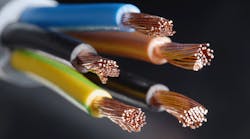Already-installed copper cabling may very well solve the problem of maintaining consistent power delivery at the edge of networks. Minimizing the need to deploy batteries deep in the network, Alpha Technologies announced the LPS04, an extension of the LPS36 family of ±190-V dc line power products, and the Aggregator, a NEC Class 2 device that makes it possible to combine multiple cables to power larger indoor distributed-antenna-system (iDAS) remote nodes.
With the LPS04 and Aggregator, carriers can use their embedded copper cables to power remote devices from central-office power plants, helping to reduce the capital requirements for powering indoor DAS networks while powering the remote nodes from the power system at the DAS host site. The LPS04, a four-circuit, dc-dc upconverter module with a wide operating temperature range, is environmentally sealed for easy deployment in harsh environments. The Aggregator combines multiple NEC Class 2 circuits into a single 48-V output, enabling DAS and small-cell providers to use conventional cable to deliver power.
Using the existing remote power-node backup without the need for ac utility or battery backup at the remote site decreases installation and operating expenses. Also, site selection for the installation of remote communication equipment builds in added flexibility. Class 2 compliance—even for remote devices that consume more than 100 W—eliminates the need for conduit, licensed electricians and remote batteries.
